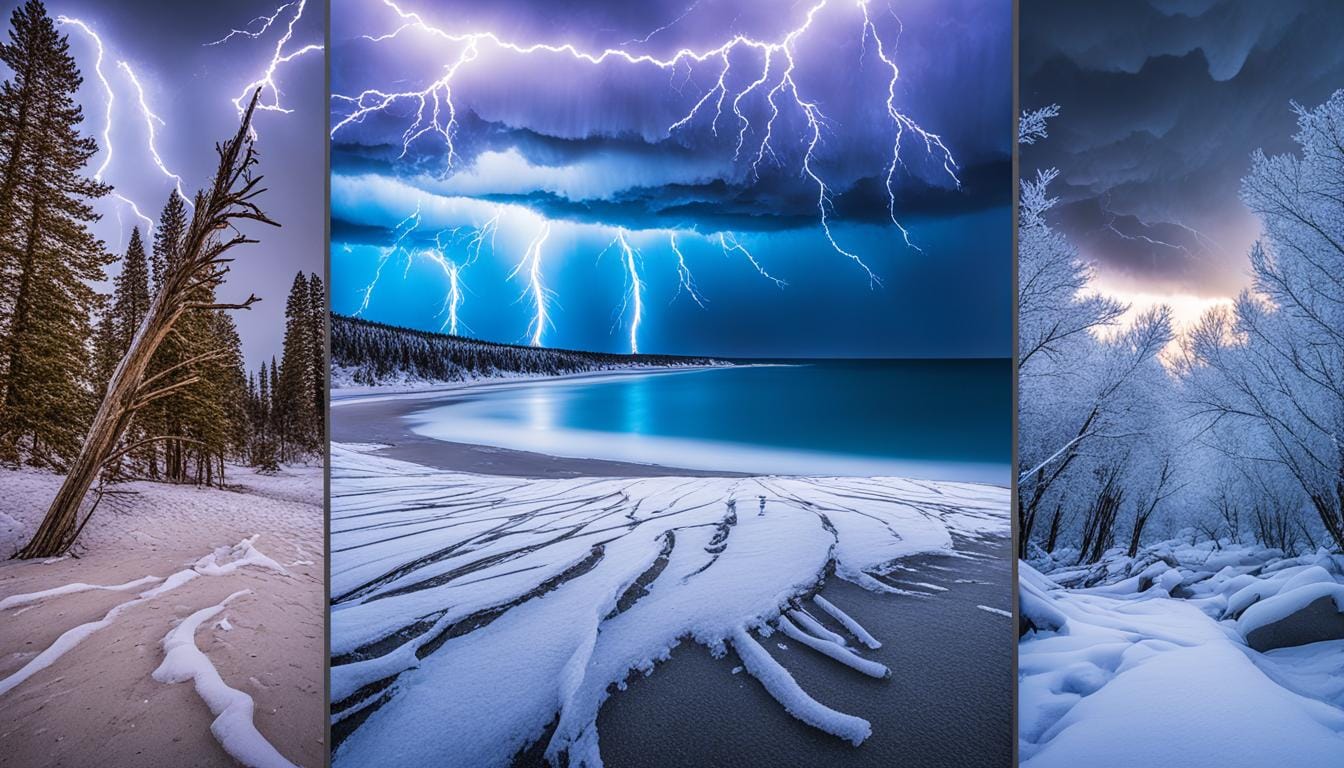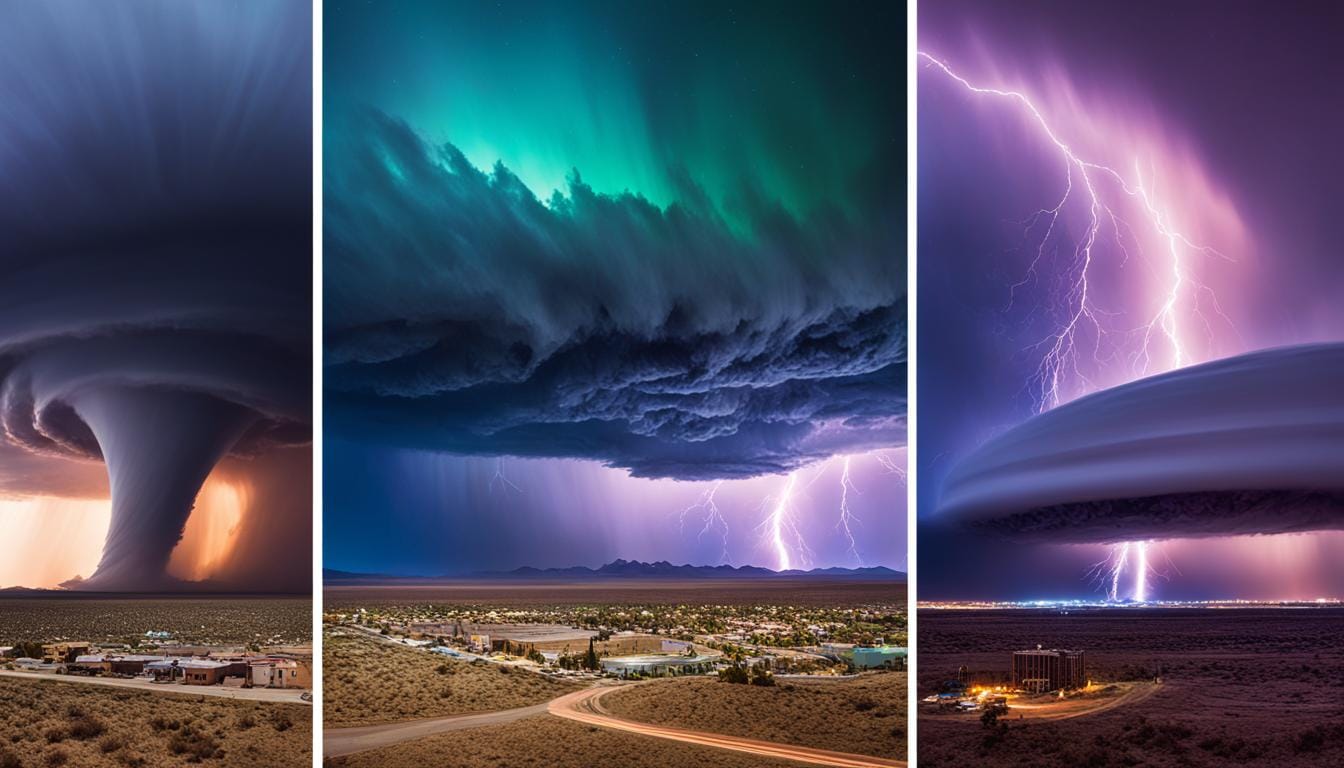The natural world is full of wonders that amaze us. From the beautiful dance of the Northern Lights to the loud roar of Iguazu Falls, these sights make us feel small yet connected to our planet. They inspire us to explore and appreciate the beauty of Earth.
In this article, we’ll explore 10 natural wonders that will amaze you. These sights show the beauty and power of our planet. They are perfect for anyone who loves nature and adventure.
Key Takeaways
- Explore the world’s most captivating natural wonders and phenomena
- Discover the unique geological, atmospheric, and environmental processes that shape these remarkable sites
- Gain a deeper appreciation for the awe-inspiring beauty and power of our planet
- Uncover the best destinations to witness these natural spectacles firsthand
- Plan your next adventure to experience the magic of nature’s most extraordinary creations
Mesmerizing Pink Lakes
Australia is home to a mesmerizing natural wonder – pink lakes. These lakes range from vibrant magenta to delicate lilac. Their stunning colors come from high salt levels and green algae like Dunaliella Salina.
Hutt Lagoon in Western Australia is famous for its pink waters. It changes color with the day and sunlight, showing off shades of bubblegum pink, vivid red, or soft lavender. Photographers and nature lovers flock to this spot.
Western Australia and South Australia’s Vibrant Salt Lakes
Western Australia and South Australia have more pink lakes. You can find them in places like Esperance, Murray-Sunset National Park, and Middle Island. Each lake has its own unique color, from deep magenta to delicate salmon.
| Lake | Location | Size | Notable Features |
|---|---|---|---|
| Great Salt Lake | Utah, USA | 75 miles long, 28 miles wide | Largest saltwater lake in the Western Hemisphere |
| Laguna Rosada | Mexico | N/A | Located approximately 4 hours’ drive from Cancun International Airport |
| Las Coloradas | Yucatán, Mexico | N/A | Experiences warm and sunny weather year-round, with a rainy season from June to October |
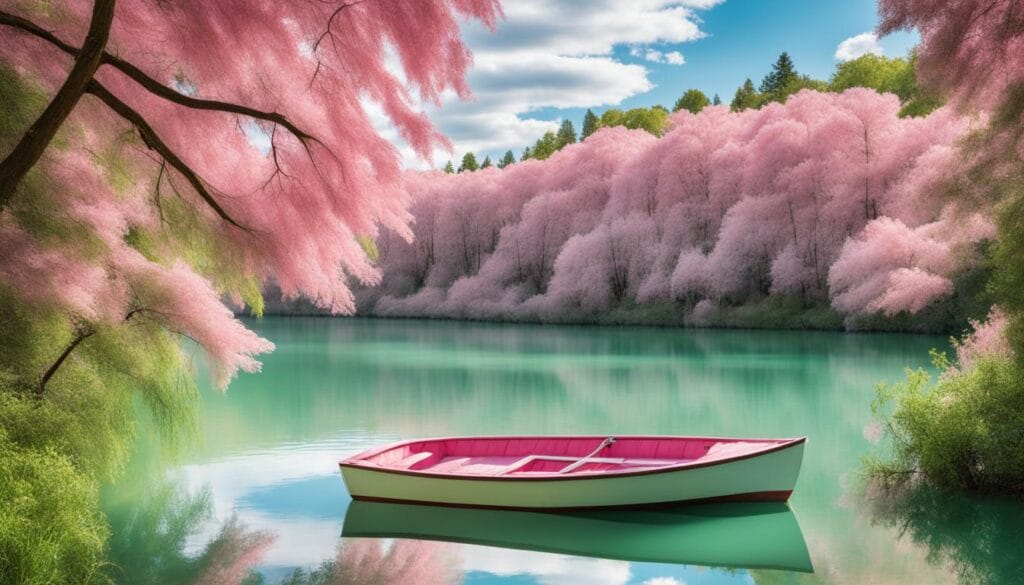
The pink lakes are a stunning sight but not for swimming. They are very salty. Visitors can only see them from certain spots or by plane. This helps protect the ecosystem.
Iguazu Falls: Nature’s Thundering Spectacle
The Iguazu Falls sit in the lush rainforests of South America, on the border of Argentina and Brazil. This UNESCO World Heritage Site is a natural wonder. It has over 270 water cascades that stretch almost 3 kilometers wide.
These falls were made over thousands of years by volcanic eruptions. They carved out the dramatic landscape. The Iguazu Falls are 80 meters high, higher than Niagara Falls and twice as wide. This makes them an awe-inspiring sight for visitors.
The Iguazu National Park is home to the falls and is a sanctuary for many plants and animals. It also has the indigenous Guarani people, who have a deep connection to this place. The park shows how human life and nature can live together.
The Iguazu River’s water flow has increased, going from 1.5 million liters per second to 24.2 million liters per second. This happened because of heavy rain in southern Brazil, possibly made worse by El Niño. This shows we need to protect and manage tourism to deal with climate change.
“The Iguazu Falls are a true natural masterpiece, a testament to the power and beauty of our planet. Witnessing them in person is an experience that will leave an indelible mark on your soul.”
Whether you see the falls from Argentina or Brazil, they are a place everyone should visit. They show the stunning beauty of our world.

Victoria Falls: The World’s Greatest Curtain of Falling Water
Victoria Falls lies on the border of Zambia and Zimbabwe. It’s a stunning natural wonder that has amazed people worldwide. The Kololo people call it “Mosi-oa-Tunya” or “The Smoke that Thunders.”
This waterfall is the world’s largest sheet of falling water. It stretches 1,708 meters wide and can be as high as 108 meters. The Zambezi River creates this massive spectacle, with water flowing at an incredible rate during the peak season.
Lunar rainbows, or moonbows, are a special feature of Victoria Falls. They happen when moonlight hits the mist from the falls. These beautiful light shows can be seen on clear nights during a full moon.
In 1989, Victoria Falls was named a UNESCO World Heritage Site. It’s celebrated for its natural and cultural beauty. People come from all over to see the falls, enjoy activities like bungee jumping, or visit the Mosi-oa-Tunya National Park.
“Victoria Falls is one of the Seven Natural Wonders of the World, and it’s easy to see why. The sheer power and beauty of this waterfall are truly awe-inspiring.” – David Attenborough, renowned naturalist and broadcaster
Visiting Victoria Falls is an unforgettable experience. It’s perfect for nature lovers, adventure seekers, or anyone who loves the beauty of our planet. The falls’ thunderous sound and beautiful moonbows show the power and beauty of our world.
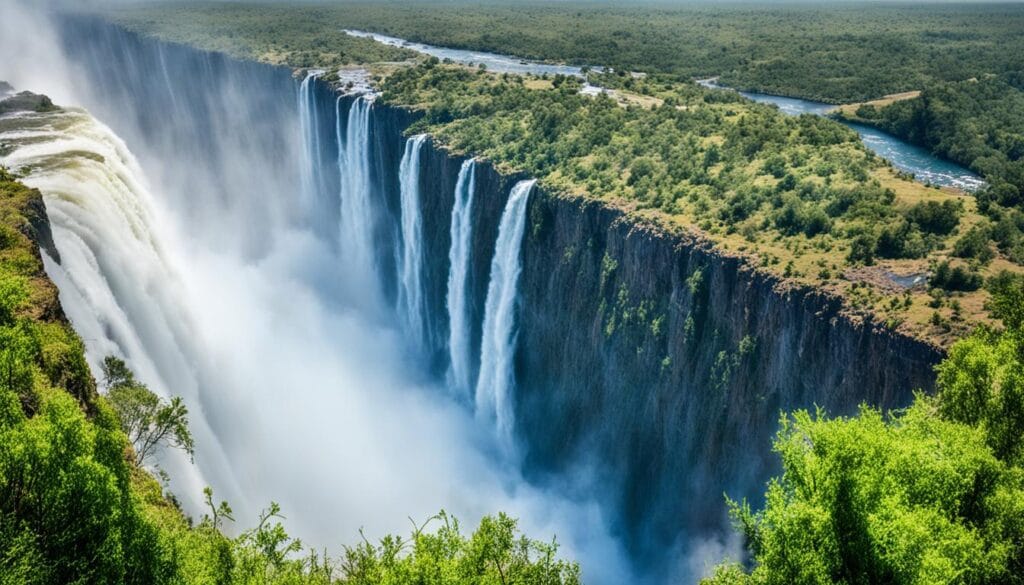
Natural Phenomena: Salar de Uyuni’s Stunning Salt Flats
In the heart of Bolivia lies the Salar de Uyuni, a wonder of nature. It’s the largest salt flat in the world, covering 12,000 square kilometers. This vast area was formed when ancient lakes dried up, leaving behind a vast salt flat.
Bolivia’s Mirrored Landscape: A Photographer’s Dream
During the rainy season, from December to April, the Salar de Uyuni comes alive. Nearby lakes overflow, creating a thin layer of water on the salt crust. This water makes the sky’s reflection perfect, turning the landscape into a photographer’s dream.
The Salar de Uyuni sits at 3,650 meters above sea level. It’s a high-altitude wonder. The “Salt Eyes” are formed by fresh water currents, creating a unique effect. Visitors can also see the Palacio de Sal, a hotel made entirely of salt.
“Here, a thick crust of salt extends to the horizon, covered by quilted, polygonal patterns of salt rising from the ground,” National Geographic writes, capturing the essence of this captivating natural wonder.
If you love photography or just want to see nature’s beauty, the Salar de Uyuni in Bolivia is a place you must visit. The mirrored landscape and the rainy season make it unforgettable. It shows the power and beauty of our world.

Waitomo Glowworm Caves: Nature’s Illuminated Masterpiece
In the heart of New Zealand’s North Island, the Waitomo Glowworm Caves are a natural wonder. They are filled with bioluminescent larvae, known as Arachnocampa Luminosa. These larvae light up the caves with a beautiful display.
Visitors float on an underground river in silence. They see thousands of lights that look like stars in the sky. These “glowworms” are not worms but fungus gnat larvae. They glow to catch prey.

The Cathedral, the biggest cavern, stays at 14 degrees Celsius all year. It’s important to be quiet in the caves. This helps protect the special ecosystem inside.
People have been visiting since the late 1800s. They come for the beautiful limestone and caves. Now, many tourists go there, so it’s wise to book tickets early.
If you love nature or just want a magical experience, don’t miss the Waitomo Glowworm Caves. Thanks to conservation, this wonder will continue to amaze people for years.
Iceberg Alley: Witness Colossal Icebergs in Motion
Nestled along the northeastern coast of North America, Iceberg Alley is a mesmerizing natural spectacle. From late April to early June, visitors can watch colossal icebergs move southward from Greenland. They do this along the shores of Newfoundland and Labrador.
Newfoundland and Labrador’s Spectacle of Floating Ice Monoliths
Every year, 400 to 800 icebergs break off from Greenland’s glaciers. They start a journey to Iceberg Alley. Tracking these icebergs is important for tourism and offshore oil companies in the Labrador Sea.
A system called Icebergfinder.com helps track the icebergs. It gives data on their size, type, and location. This helps with safe navigation and makes visiting better for tourists.
The icebergs are huge and beautiful. As they melt, they show off patterns and colors. These range from bright white to deep blue. This shows the power and beauty of the Earth’s cryosphere.
“The journey to trace Frederic Edwin Church’s iceberg expedition involved visiting key sites, including L’Anse aux Meadows and Red Bay, marking significant historical and cultural landmarks tied to iceberg exploration and whaling activities.”
Visiting Iceberg Alley is an adventure. The seas and weather can be tough. But, people like Frederic Edwin Church in the 19th century have explored these waters to see the icebergs up close.
Now, with climate change, Iceberg Alley reminds us of our planet’s fragility and strength. Looking at these icebergs, we see how important it is to protect our world. We must keep these natural wonders safe for the future.
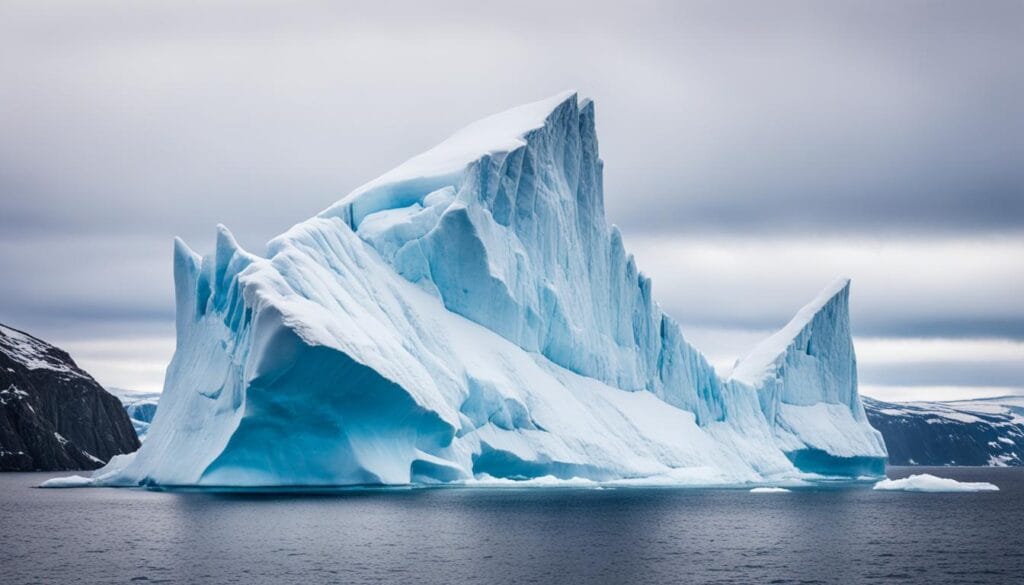
Geirangerfjord: Norway’s Breathtaking Waterfall Wonderland
In the heart of Norway lies the Geirangerfjord, a true marvel of nature. This UNESCO World Heritage Site is known for its towering mountains, stunning waterfalls, and deep waters. It’s a top spot for those who love the outdoors and nature.
The Geirangerfjord is home to two famous waterfalls: The Seven Sisters and The Suitor, also known as The Wooer. These waterfalls face each other, creating a beautiful sight. The Seven Sisters falls about 820 feet, and The Suitor reaches 902 feet, showing a romantic gesture.
Geiranger has a dry summer, subarctic climate with lots of rain even when it’s driest. The best time to visit is from May to September. This is when the waterfalls are full and the roads are clear after winter.
| Waterfall | Height | Unique Feature |
|---|---|---|
| The Seven Sisters | 820 feet | A series of seven distinct cascading streams |
| The Suitor (The Wooer) | 902 feet | Symbolizes a courting suitor, facing the Seven Sisters |
In Geiranger, you can visit a charming village with shops, traditional food, and amazing views. Trails like Knuten or Storseterfossen let you see the Seven Sisters Waterfall and the beautiful fjord up close.
The Geirangerfjord is a UNESCO World Heritage Site. It needs careful tourism to keep it beautiful for the future. With its stunning waterfalls, high mountains, and calm fjord, it’s a natural wonder that will amaze everyone.
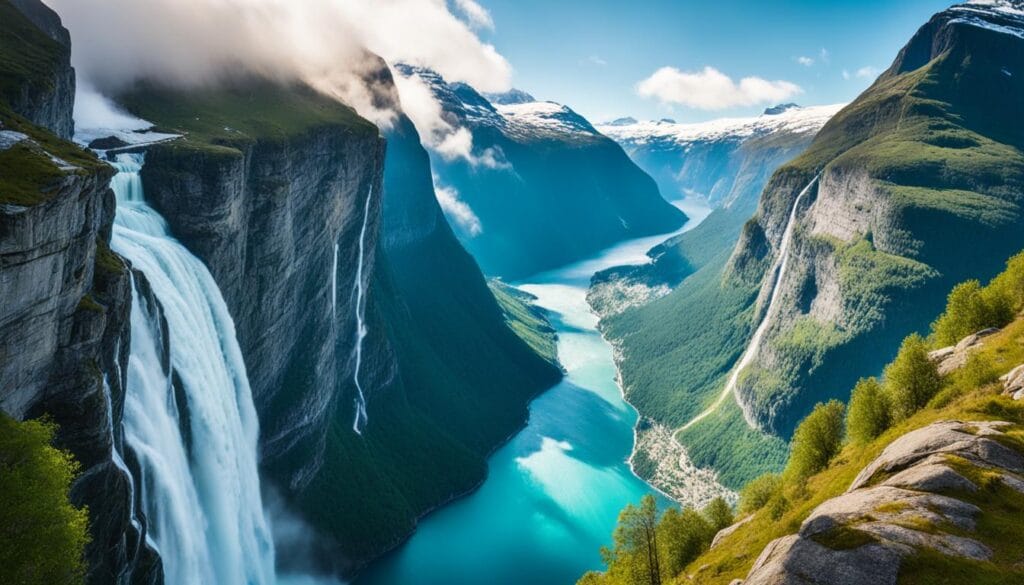
Aurora Australis: The Southern Lights’ Celestial Dance
The Aurora Australis, or southern lights, is just as stunning as the northern lights. It lights up the night sky with colors like green, purple, blue, and red. This natural wonder is known as the Southern Lights.
The best time to see the Aurora Australis is from May to August in the Southern Hemisphere. The spring equinox in September is also a great time to watch. Places like Tasmania, Bruny, and Satellite islands are perfect for viewing the Southern Lights.
The Aurora Australis happens when the Earth’s magnetic field meets charged particles from the sun. These particles light up the sky with beautiful colors. The spring and autumn equinoxes make the auroras brighter and more frequent, thanks to the Russell McPherron effect.
“The Aurora Australis is a mesmerizing natural wonder that captivates the senses, reminding us of the awe-inspiring power and beauty of our planet’s celestial dance.”
Seeing the Aurora Australis is an experience you won’t forget. It’s amazing in Tasmania and across the Southern Hemisphere. The Southern Lights amaze and inspire everyone who sees them.
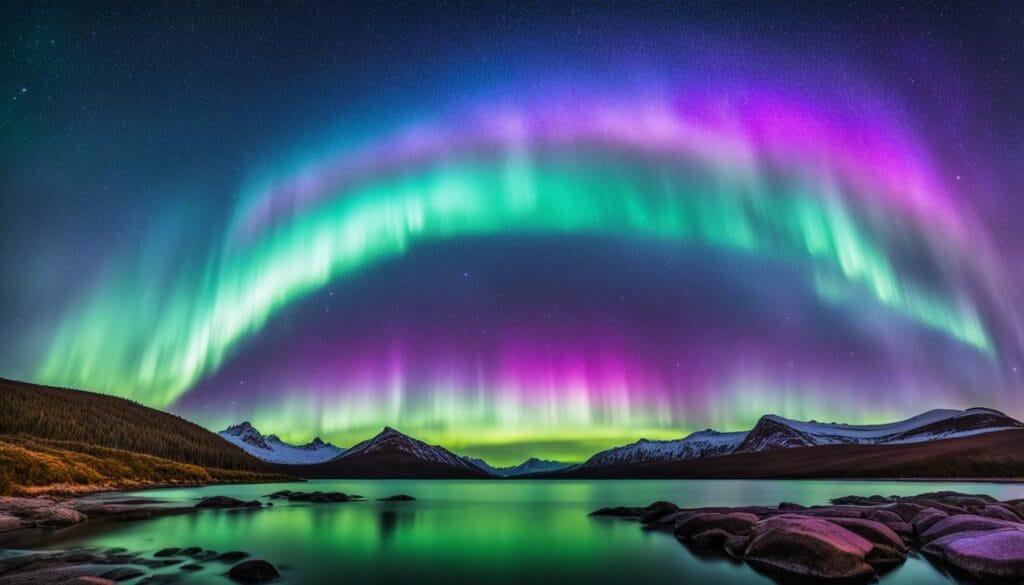
Halong Bay: Vietnam’s Limestone Karst Masterpiece
In the Gulf of Tonkin, the Halong Bay is a UNESCO World Heritage Site. It shows nature’s power in a stunning way. This place has been shaped over 500 million years. It has tall limestone pillars and cliffs covered in greenery, making a beautiful view.
The Hung Sung Sot Cave, or “Surprise Cave,” is a top spot in Halong Bay. It’s huge, covering over 10,000 square meters. People can walk through the cave and see the amazing rock formations made by nature.
For a full experience, take a cruise in Halong Bay. You’ll see green waters, hidden spots, and islands. You can also learn about the local culture and history. This UNESCO World Heritage Site in Vietnam is a place you shouldn’t miss.
“Halong Bay is a place of great natural beauty, with its towering limestone cliffs, lush forests, and serene waters. It’s a true masterpiece of nature that everyone should experience at least once in their lifetime.”
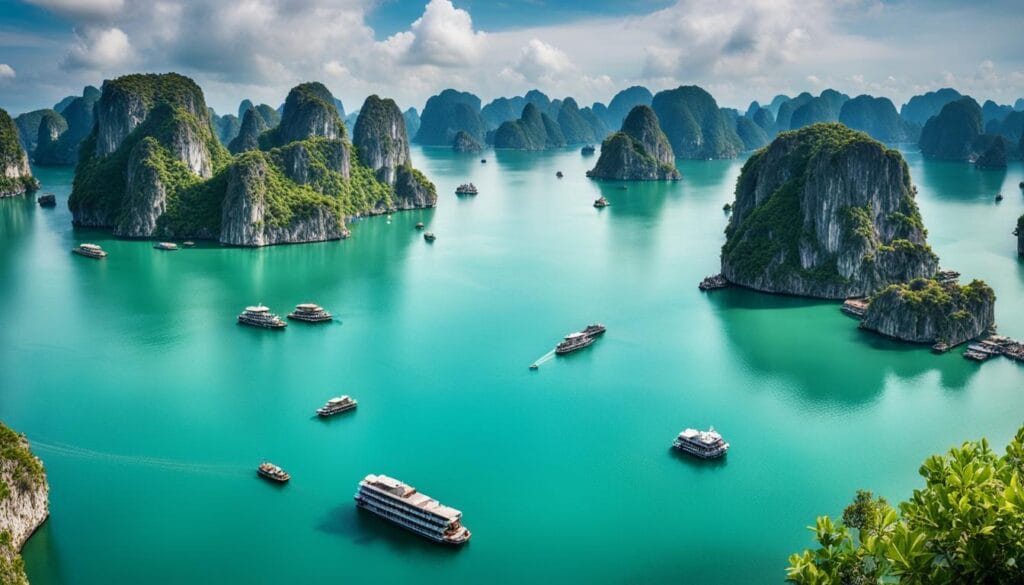
A UNESCO World Heritage Site Formed Over 500 Million Years
The stunning views of Halong Bay took 500 million years to form. Wind and rain shaped the limestone into amazing cliffs and hills. Once it was land, but then it flooded, creating the bay we know today.
Halong Bay was named a UNESCO World Heritage Site in 1994 and 2000. It’s a huge area of 1,553 square kilometers with over 1,600 limestone islands. Its beauty, history, and nature make it a top spot in Vietnam.
Catatumbo Lightning: The Everlasting Thunderstorm
In the heart of Venezuela lies the Catatumbo region, famous for its stunning Catatumbo Lightning. This natural wonder is known as the “everlasting thunderstorm.” It lights up the sky almost 300 nights a year, right where the Catatumbo River meets Lake Maracaibo.
The Catatumbo Lightning is truly a sight to see. These storms can last up to 10 hours, with lightning flashing up to 28 times a minute. This frequent lightning helps to recharge the earth’s ozone layer, making the area a natural marvel.
The area’s geography makes this lightning show possible. Warm air from the Caribbean Sea mixes with cold air from the Andes Mountains. This mix creates the perfect conditions for the Catatumbo Lightning. As a result, the region sees an average of 250 lightning strikes per square kilometer each year. It’s the most lightning-prone place on Earth.
“The Catatumbo Lightning is a true testament to the power and beauty of nature. It’s a phenomenon that has fascinated scientists and visitors alike for centuries.”
While the lightning is beautiful, it can also be dangerous. Every year, three to four people in the area get hit by lightning. This highlights the importance of safety and caution. Yet, the Catatumbo Lightning’s beauty still attracts adventurers from all over the world.
Discover Nature’s Marvels with Travel Insurance
When you plan to see nature’s wonders, getting travel insurance is key. Your health insurance at home might not cover you abroad. So, it’s smart to get travel insurance.
An Allianz Travel Insurance plan can save you in a covered medical emergency. It offers emergency medical help. This means you won’t worry about unexpected medical costs while traveling.
Travel insurance isn’t just for health issues. It also covers non-refundable expenses if your trip gets cancelled or delayed. This includes things like sudden illness, flight cancellations, or natural disasters. So, you can enjoy nature’s beauty without worrying about money.
“Discovering nature’s wonders is a truly awe-inspiring experience, but it’s important to protect your investment with the right travel insurance. Allianz Travel Insurance can give you the peace of mind to fully enjoy your journey.”
So, when planning your next trip to see pink lakes, thundering Iguazu Falls, or Salar de Uyuni salt flats, don’t forget travel insurance. It’s a must-have for a worry-free adventure. With the right coverage, you can make memories that last a lifetime.
Conclusion
This article has taken us on a journey to 10 amazing natural wonders. From the pink lakes in Western and South Australia to the Catatumbo Lightning in Venezuela, we’ve seen the power and beauty of our planet. These sights, in both remote and easy-to-reach places, leave us in awe of nature’s mystery.
We’ve looked at geological events, weather, environmental changes, and more. These show how complex and changing our Earth is. By learning about these, we can better respect and protect our planet.
Places like Salar de Uyuni’s salt flats, Iguazu Falls, and the Waitomo Glowworm Caves invite us to explore. They show us the incredible beauty of our world. By seeing these wonders, we connect more with nature and work to protect it for the future.

